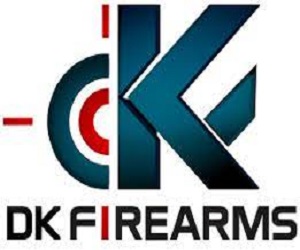Klunatic
Ultimate Member
I am gearing up to reload 260Rem and have ordered a set of RCBS Gold Medal dies. The problem I am having is determining what size bushing to get for the dies. This is what RCBS specifies to determine the neck bushing size.
NECK BUSHING SELECTION
Neck bushings are not included. Proper neck bushing size
can be determined two ways. Measure the outside neck
diameter of a sample loaded cartridge, subtract .002" to
.003". This allows approximately .001" of brass spring
back for correct neck tension. The other is to measure the
neck wall thickness of your case, multiply by two, add the
diameter of your bullet and subtract .001". For example:
loaded case neck diameter is .333-.002=.331 neck bushing
or .012 case neck thickness, .308 diameter bullet is
.012+.012+.308 =.332-.001=.331 neck bushing. RCBS
suggests that you have neck bushings one to two sizes
above and below your target diameter
I don't have any loaded rounds to measure so I am going to the 2nd method to determine the bushing. My question is am I supposed to use the actual diameter of the bullet (.264) or the caliber size (.260)?
My calculations are as follows
Lapua Brass: Case wall .016 x 2= .032
Bullet: .264 diameter, .260 caliber
so using bullet diameter: .032 + .264 - .001= .295
using bullet caliber: .032 + .260 - .001=.291
Which calculation should I use? I would think it would be the actual diameter of the bullet not the caliber of the bullet but RCBS example shows the caliber of the bullet in their example. I don't see how a loaded round wouldn't be the sum of the bullet diameter + case wall.
NECK BUSHING SELECTION
Neck bushings are not included. Proper neck bushing size
can be determined two ways. Measure the outside neck
diameter of a sample loaded cartridge, subtract .002" to
.003". This allows approximately .001" of brass spring
back for correct neck tension. The other is to measure the
neck wall thickness of your case, multiply by two, add the
diameter of your bullet and subtract .001". For example:
loaded case neck diameter is .333-.002=.331 neck bushing
or .012 case neck thickness, .308 diameter bullet is
.012+.012+.308 =.332-.001=.331 neck bushing. RCBS
suggests that you have neck bushings one to two sizes
above and below your target diameter
I don't have any loaded rounds to measure so I am going to the 2nd method to determine the bushing. My question is am I supposed to use the actual diameter of the bullet (.264) or the caliber size (.260)?
My calculations are as follows
Lapua Brass: Case wall .016 x 2= .032
Bullet: .264 diameter, .260 caliber
so using bullet diameter: .032 + .264 - .001= .295
using bullet caliber: .032 + .260 - .001=.291
Which calculation should I use? I would think it would be the actual diameter of the bullet not the caliber of the bullet but RCBS example shows the caliber of the bullet in their example. I don't see how a loaded round wouldn't be the sum of the bullet diameter + case wall.

